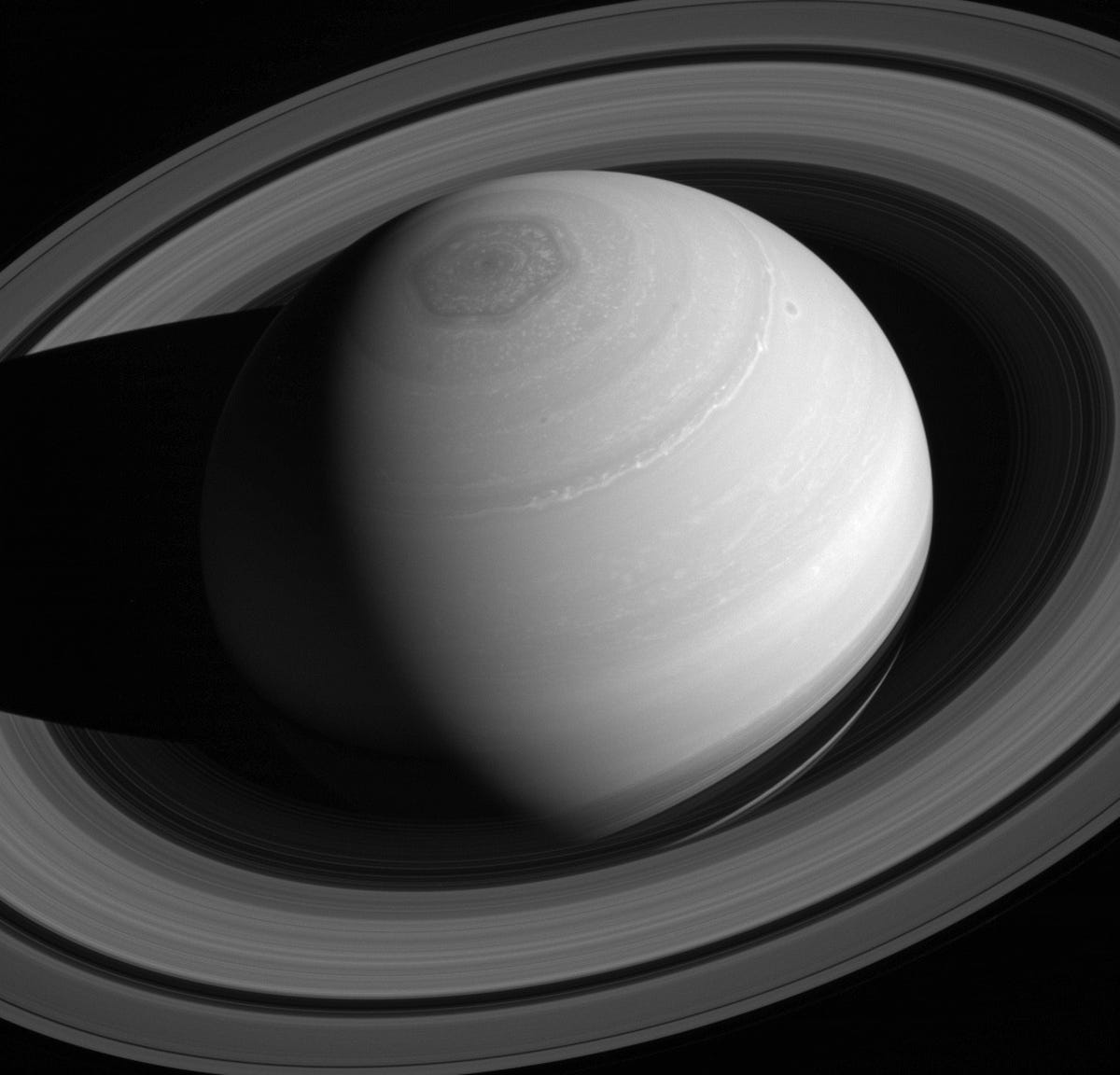Saturn seen in stunning space images (pictures)
From glimmering rings to strange happenings on the moon Titan, Saturn is a wondrous planet that humans can't take their eyes off.

Saturn shows off its rings
Saturn is a real standout in our solar system thanks to its impressive rings. This near-infrared image was taken by the Cassini spacecraft in the spring of 2014 while it was 2 million miles away from the planet. The rings mainly consist of tiny particles of ice, dust and rock.
Related article: Cassini spies dawn from an alien planet
Saturn's moon Titan with a sunglint
Saturn's moon Titan is a wondrous object in space. This image shows sunlight glinting off the moon's polar seas. The mosaic picture also shows bright methane clouds that could be raining and refilling the seas below. Titan's seas are primarily composed of liquid methane and ethane.
Related article: Cassini spies dawn from an alien planet
Saturn and its many moons
NASA's Cassini spacecraft has been responsible for sending back many gorgeous images from Saturn. This picture shows a rare look at three of the planet's moons. Scientists have counted some 62 moons around Saturn, not all of which even have names. This image shows Tethys, Hyperion and Prometheus. Prometheus is the moon peeking out from the ring at the lower left.
Related article: Cassini spies dawn from an alien planet
Saturn's eye stares out
While we're looking at Saturn, Saturn is looking back at us. A massive vortex at Saturn's north pole looks like a wide-open eye. Scientists have measured the eye at 1,240 miles across, fueled by clouds speeds of up to 330 mph.
Related article: Cassini spies dawn from an alien planet
The rose of Saturn's eye
This false-color image shows Saturn's "eye," the spinning vortex located at the planet's north pole. This image, taken in 2012, was one of Cassini's first sunlit views of the north pole. When Cassini first arrived at Saturn in 2004, the pole was in darkness.
Related article: Cassini spies dawn from an alien planet
Titan's mystery island
Saturn's fascinating moon Titan has been the subject of quite a bit of scientific study, with plenty of calls to send more advanced missions to its surface to delve into some of its mysteries. This image shows one of those mysteries: a "magic island" in a liquid-methane sea that has appeared, disappeared and reappeared in images taken over time. The odd phenomenon may be due to floating solids, gasses bubbling up or solids suspended just under the surface.
Related article: Cassini spies dawn from an alien planet
Saturn's baby moon
Scientists are learning more about how Saturn's moons may come into existence thanks to what appears to be an icy object forming at the edge of the planet's outer ring. The small disturbance may be a small moon in the process of formation. Once again, we can thank Cassini for capturing this image.
Related article: Cassini spies dawn from an alien planet
If Earth had Saturn's rings
Astronomy artist Ron Miller took on the challenge of depicting what Earth would look like if it had rings like Saturn. This illustration shows how spectacular the view would be from the surface of our blue marble. It's a sight to behold.
Related article: Cassini spies dawn from an alien planet
Saturn's high-speed clouds
Saturn gets its distinctive look from cloud patterns created by extremely high-speed winds. The winds can top 1,100 mph. This image was taken by the Cassini spacecraft in the spring of 2014.
Related article: Cassini spies dawn from an alien planet

